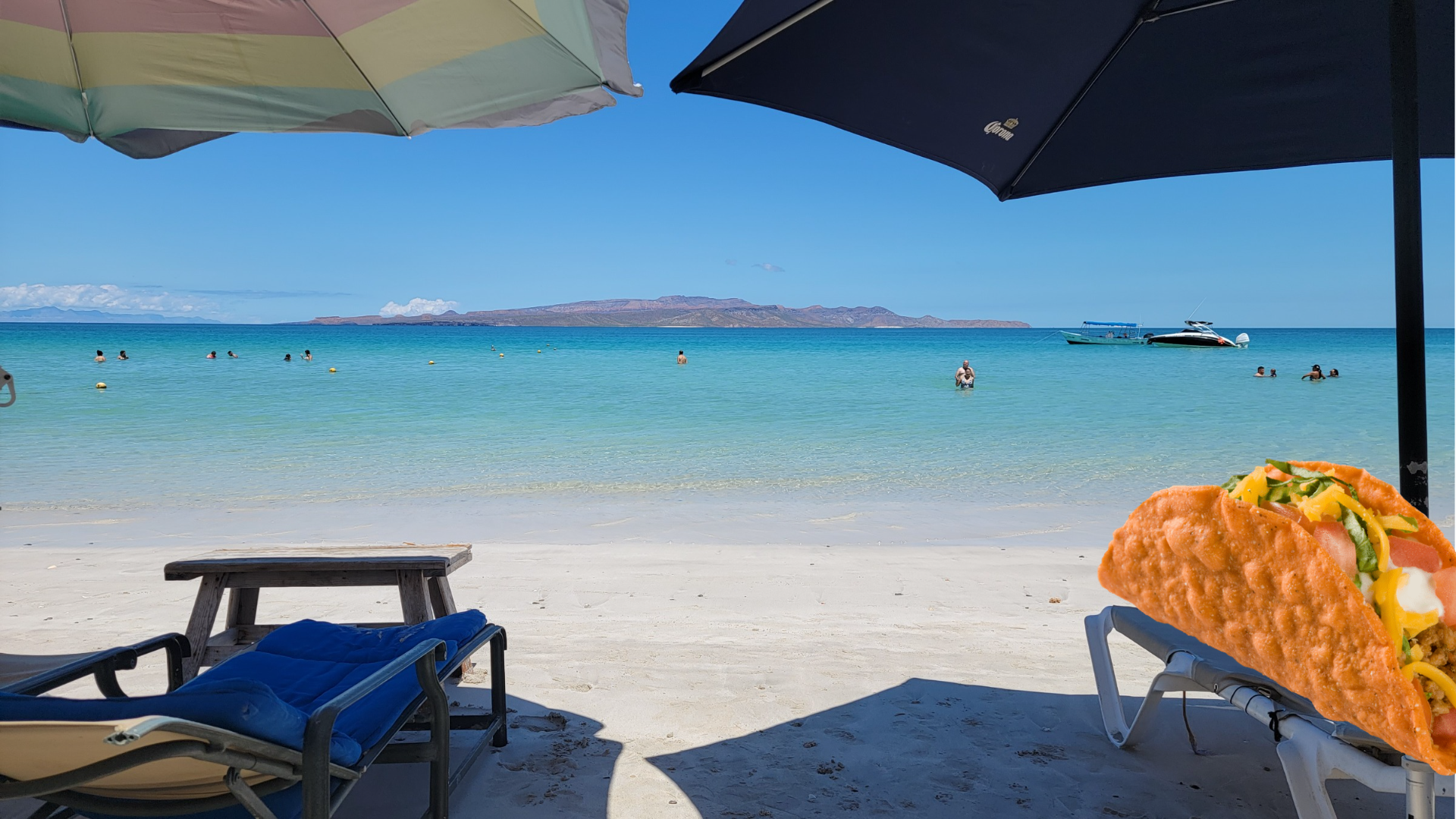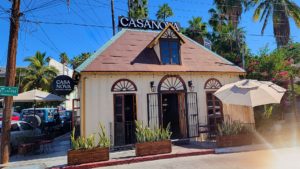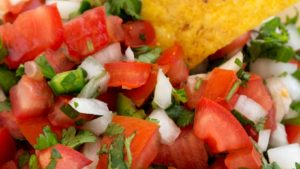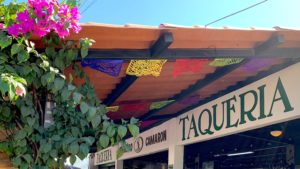The Old El Past
Remember Chi-Chi’s? I don’t.
Although the Tex-Mex restaurant chain with the eyebrow-raising name (go ahead, Google its meaning in Spanish) was big when I was a kid, I don’t quite recall ever making it out to one of their locations, despite my fascination with reports that they were somehow deep-frying ice cream. I guess we weren’t all that hungry for chimichangas in our household. We never went to Taco Bell either for that matter. This was easy since “The Cure For The Common Meal”, as they claimed to be at the time, didn’t show up in our neck of the woods (Quebec) until way later. After having endured common meals for far too long, I finally got around to sampling their product while on a visit to New York City in my late teens, just a few years before that ridiculous chihuahua started showing up in our living rooms. In the spirit of politeness, let’s just say I didn’t require any more of the cure after that one visit, but that’s me.
No, when it came to “Mexican” food when I was growing up, we, like many Canadians in the 1980s, sourced ours from a red and yellow “kit” off a supermarket shelf. This came courtesy of a company owned by General Mills, the good people who bring us Lucky Charms, Count Chocula, Yoplait and Häägen-Dazs. Yup, we’re talking Old El Paso.
Along with many of my peers, throughout the first chapters of my life, my understanding of Mexican cuisine was pretty much limited to an assemblage of 8 ingredients, give or take: a plastic bag of u-shaped hard taco shells, a pack of spice mix, ground beef, grated yellow cheddar, shredded iceberg lettuce, diced tomatoes, onions and sour cream. And maybe some “taco sauce” for good measure. That’s where it began. That’s where it ended. That’s all we knew.
Don’t get me wrong, the stuff was delicious, and paired perfectly with a summer afternoon in the backyard sliding our hearts out on a Wet Banana (you may be more acquainted with its equally slick, more popular cousin, Slip ‘N Slide). Let’s take a second and give a big shout-out right now to all the moms and dads and level lawns that made those good times happen.
That being said, when I finally saw my first real taco, I had no idea what the hell I was looking at. It was soft and wobbly, the tortilla all weird and round. I had just found out about flat-bottomed hard taco shells – to prevent your tacos from falling over, because that’s crucial of course – and here was a taco that had no intention of standing up at all. And where were the usual fillings? Where was my iceberg? One bite of that taco al pastor though, and everything changed. There was no more Old El Paso. There would be no New El Paso. There was just the rest of my taco-tasting life, and I hadn’t even been to Mexico yet.
A Piece of Peace
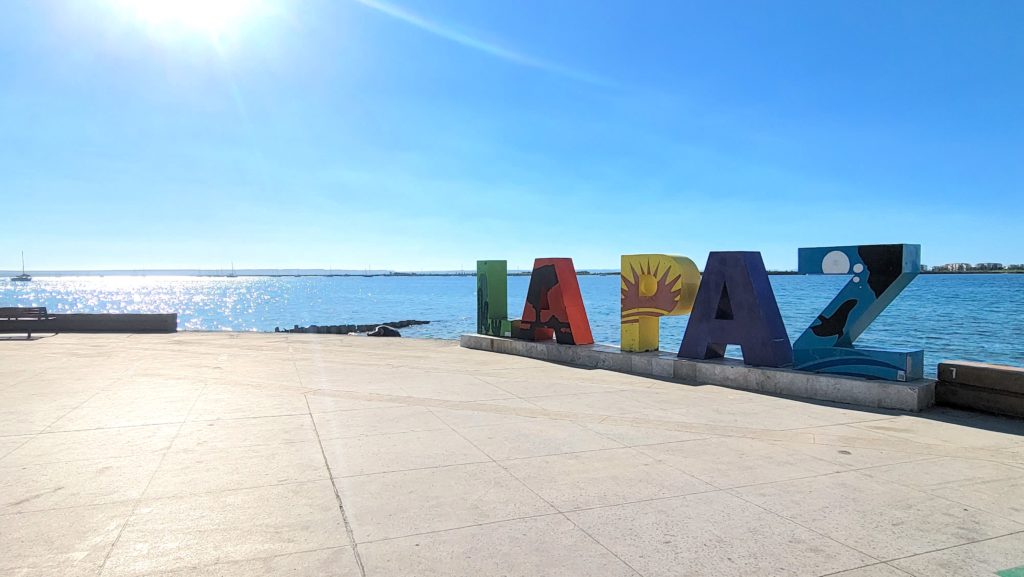

The Hungry Herald has been in Mexico for many months now, and, true to our resolution to meditate more on tacos after our first outstanding ones in Cabo, we’ve been doing just that, one taco at a time. Two of those months were spent in La Paz, Baja California Sur, and we’d like to now turn the spotlight on that absolutely wonderful town, our home away from home, as we take a little time out to talk some taco and then some.
La Paz. Peace. Few towns are more fittingly named. The capital of the beautiful state of Baja California Sur, it is nestled in the southern extremity of the Bahía de La Paz on the southeastern side of the peninsula, where arid, rocky, cactus-bristling hills meet the crystal-blue waters of the Sea of Cortez. The contrast is spectacular and otherworldly, unlike anything we had ever seen, and we were hooked at first sight.
We had intended to stay for a month, but we stayed for two. There is, of course, so much to see in Mexico, and we could have done a whirlwind tour during that time. But this town just kept telling us to slow down, focus and disfruta. We felt immediately, uncannily at home in La Paz and loved everything about it: the genuinely laid-back vibe; the unbelievably friendly locals, or paceños, saying hello on the street; the magical and vibrant boardwalk, El Malecón, lined with statues honouring the sea and where something is always going on; the soul-cuddling sunsets; our favourite beach of all time a short drive away (El Tecolote!); the eclectically laid-out sidewalks, the pervading wholesomeness and healthy living; the music, the food, the drinks and the food. Yeah, that’s food twice, and we’ll get to that of course.
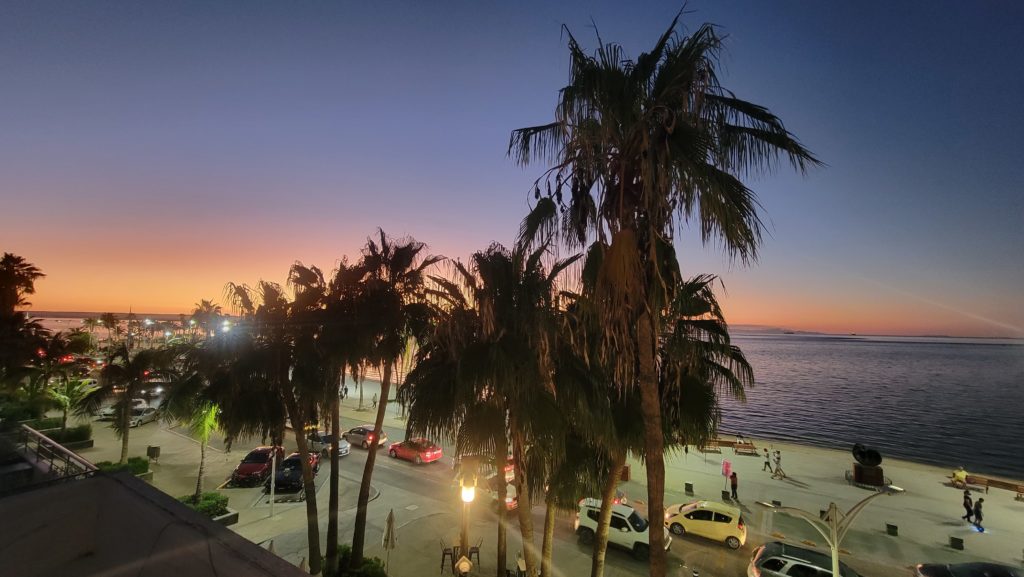
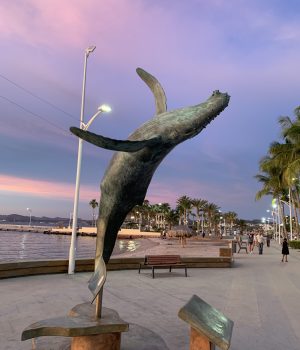
Written on the tanned faces of long-term ex-pats who call La Paz home is a special contentment, a constant signal of how happy they are with their decision, and we were beginning to understand why. There was something in the air here that was just right. We were even charmed by the junkyards, not to mention the guard dogs, from pit bulls to chihuahuas, that would occasionally lunge out of the blue against iron fences as we walked by. It gave us a start every time, but they were just doing their job. And all told, that was as intense as things ever got.
It may be the state capital, but La Paz, with a population of just over 250,000, has none of the hustle and bustle thereof. No tall buildings, no rushing executives, no honking motorists raging against the traffic. Ok, we actually did see one of the latter this one time, but he was wildly out of place and clearly from out of town. Stressing out just didn’t make any sense, and whatever residual tensions we brought with us had a hard time standing up to the surf, the breeze, the occasional hibiscus margarita, and the sheer soothing might of a pace we didn’t even know was allowed.
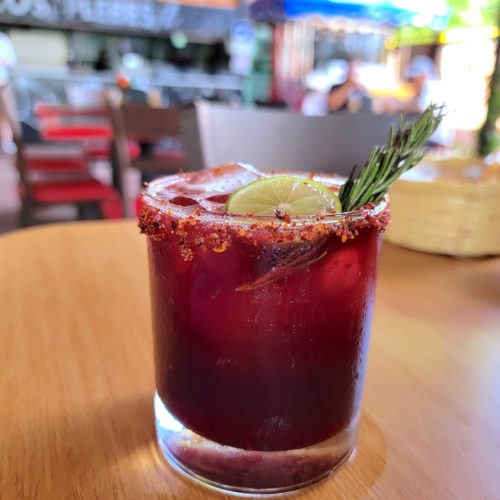
Happy Herald
In a clamshell, we were enchanted. Speaking of clams, although we expected to eat very well – pretty much a given no matter where you find yourself in Mexico – we were taken by surprise by just how well we ate in La Paz. From freakishly fresh seafood like very live “chocolate” clams (almejas de chocolate) that wiggled to the tune of lime juice in their big brown shells, and “rabbit” oysters (ostiones de conejo) about the size of baby bunnies, to simply transcendental fish soup, to show-stopping meats like carnitas – think pork confit – that were cooked with a shovel and made us weak in the knees, we were consistently blown away.
Ok, I’m enjoying making lists in this post, so please bear with me. We had mad menudo at the market (not the band), killer pizza – one of which somehow involved peanuts and raspberry jam, outstanding local chorizo, fresh-roasted coffee made by a Jedi, downright dangerous cocktails, super duper ice cream, and artisanal habanero sauce to stop the presses and your heart. La Paz just kept delivering the goods.
Over the next few posts, we’ll be sharing with you the dizzying dishliciousness coming from all corners, but for now, we’re going all out taco. And boy does La Paz pack a punch. We invite you to check out this companion post for a more detailed look at just how much of a punch.
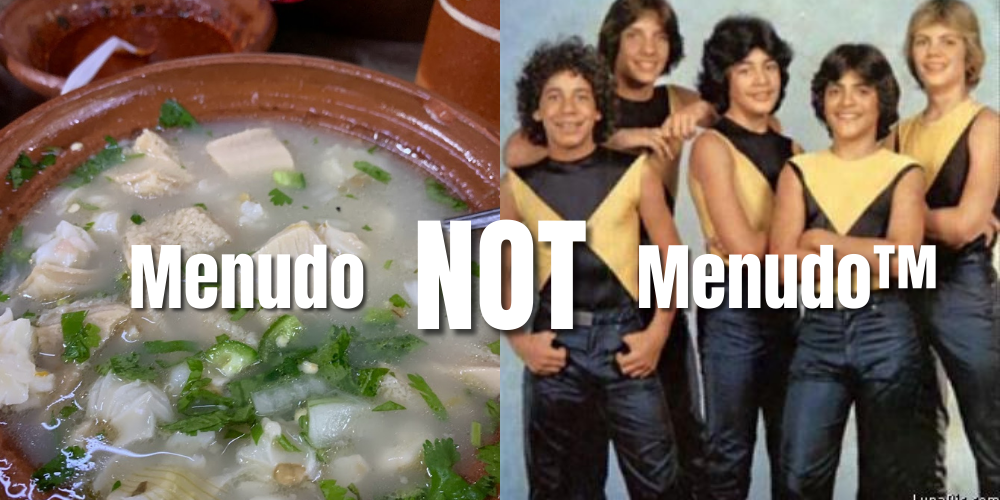
A Baja Fish Farewell
A short walk in any direction from our digs in the Centro neighbourhood would invariably lead to temptation by the taco fairy. We needn’t go far before bumping into a stand or stumbling into a family-run cantina loved by the locals, where seasoned taqueros were working their griddles, fryers and wood-burning grills for the gustatory greater good.
There was this one stand right around the corner from us that we passed regularly but never tried until our last day in La Paz. Out and about on an errand, we noticed a crowd of people gathered around on the sidewalk. An entire family was working the stand – literally five people in a two-person space, which included a cauldron of boiling oil – dishing out an array of fried seafood delights, notably the classic Baja fried fish taco. The place is called El Pulpo, particularly fitting at the time since the family indeed moved almost like an octopus, fluidly and in concert, while making wonders happen all around. Vee had been craving fish tacos for days, and we were leaving Baja soon. There was no choice. Dos por favor.
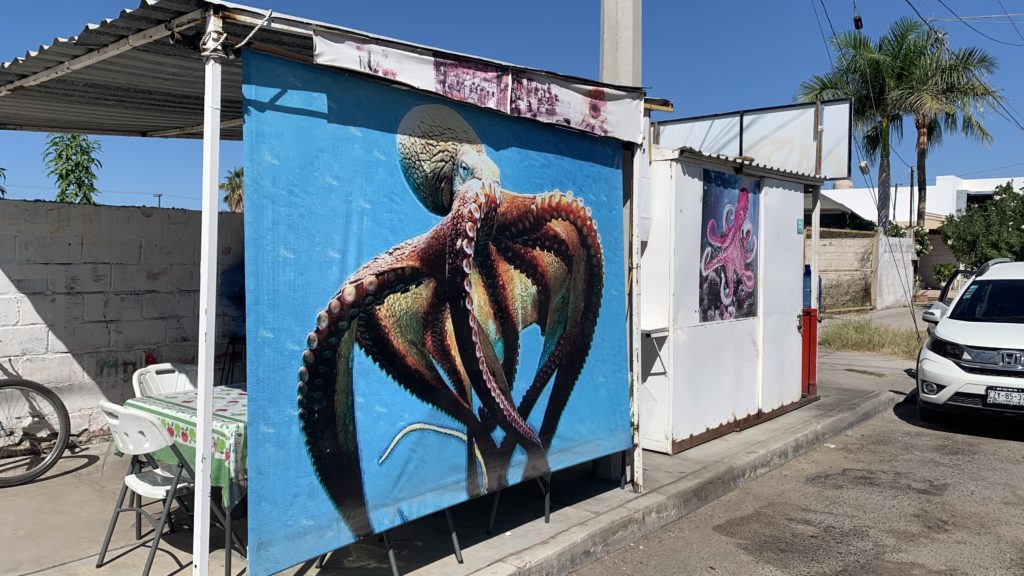
We had sampled some great Baja-style fish and shrimp tacos throughout our stay, but these things were just the ultimate send-off. Like in many taquerías, you dress them yourself, and after being handed two naked, piping-hot fish tacos, our attention was directed to the far side of the stand where a little glass cupboard with sliding doors housed the condiments. We went with some classic Baja fish friends: shredded cabbage, pico de gallo, smooth avocado cream and fresh lime. We also threw in a few habaneroed red onions for some unfettered, fiery fun.
If you could perfectly batter and wizardly fry a cumulus cloud, and that cloud was actually a filet of fresh fish, then that’s what you would have done to create those tacos, and we would have thanked you for it. The uncompromising quality of La Paz seafood met a beer-batter know-how that would give the best London pubs a run for their money. As one’s tooth went from thin, golden crisp to juicy, sumptuously tender white flesh, it just knew it was in the right place. Mixed with spot-on, vibrant condiments and seasoned with ambient street vibes, these were proper tacos. Once again, here were tacos that made you think on tacos.
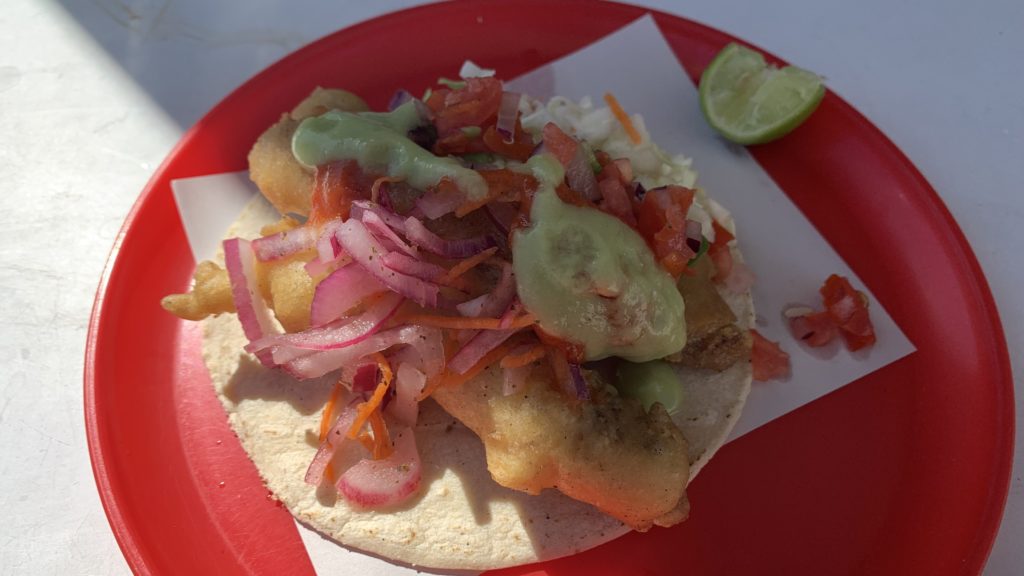
Un Poquito De Historia
The history of the taco is notoriously hard to tell, since the word only appeared in print for the first time in the late 19th century, and not in the pages of some celebrated cookbook or chronicle of Mexican gastronomy. Its debut was in Manuel Payno’s iconic 1891 novel, Los bandidos de Río Frío, in which a group of indigenous children are seen “skipping, with tacos of tortillas and avocado in their hand.” This widely read mention led to it soon thereafter being adopted into the first dictionary of Mexican Spanish: Feliz Ramos I. Duarte’s 1895 Diccionario de mejicanismos.
Prior to that, we have murky references to Moctezuma using tortillas as a spoon and indigenous people eating them with fish. Writer and chronicler Salvador Novo speculated in his 1967 gastronomical history of Mexico City, Cocina Mexicana, that Hernán Cortés and Co. may have been served banquets where Old World pork was eaten with New World tortillas. Perhaps, but centuries with virtually no written descriptions leave us with a lot of guesswork on our plate. It doesn’t take much of a leap, however, to imagine meat stuffed into a tortilla, taco style, at some point along the undocumented way.
Taco Boom!
We may not have detailed historical accounts of the taco in action, but what we can trace with a little more certainty is both the origin of the word and how it became identified with the dish. In keeping with the taco’s hazy past, however, consensus is not definitive.
For example, some say the term comes from the Nahuatl tlahco, meaning “half” or “in the middle”, suggesting a filling stuffed in the midst of a tortilla. And some, like professor of Nahuatl David Bowles, emphatically reject this notion as “simply fanciful”. Whatever the case, we’re actually intrigued by a more modern idea.
Jeffrey M. Pilcher, professor of food history and author of Planet Taco: A Global History of Mexican Food – and on whom we’ve happily leaned for much of our historical info – proposes an interesting theory. In his excellent and exhaustive investigation into the evolution of authentic Mexican cuisine and the role that globalization has played in its definition, Pilcher brings our attention to 18th-century Mexican silver mines.
At the time, miners used rudimentary explosive charges composed of gunpowder wrapped in a piece of paper that would be plugged into a prepared crevice and then lit to blast out the ore. The miners called this charge a taco, an old Spanish term with deep etymological roots in Europe that referred to a plug or wedge and things of the sort. As Pilcher says in his book: “In retrospect, it is easy to see the similarity between a chicken taquito with hot sauce and a stick of dynamite.”
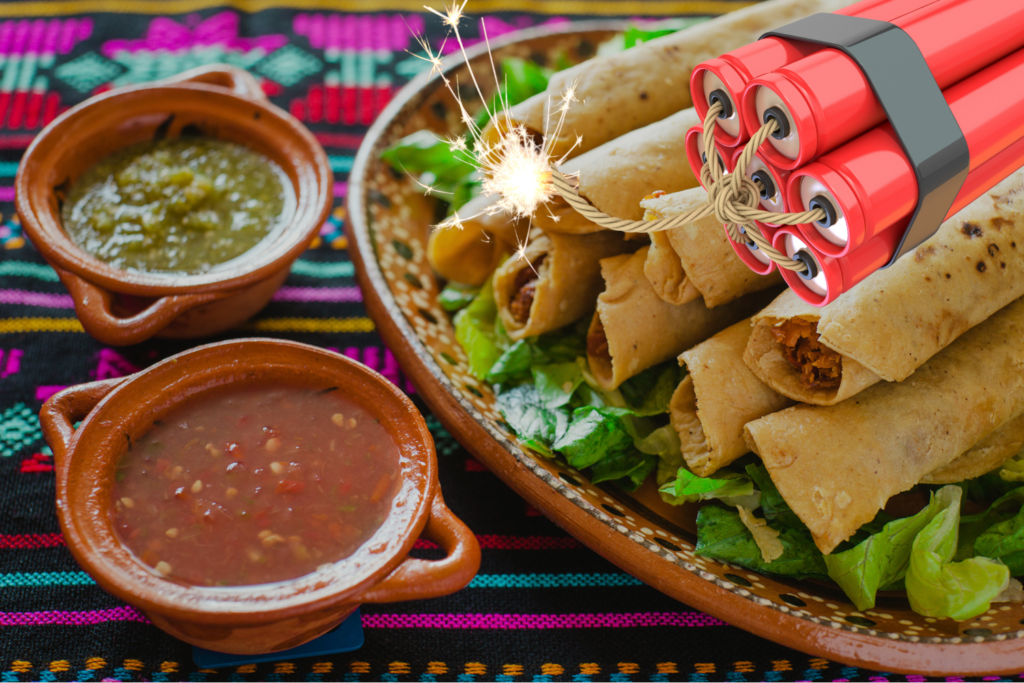
With increasing industrialization, as well as civil and economic unrest that hit the mining industry hard in the 19th century, Mexico City saw an influx of migrant workers, including miners, who brought their packed lunches with them. One meal that really seemed to have caught on was a simple combination of tortilla stuffed with potatoes and salsa that was kept warm in its own steam. Sold out of baskets by women vendors on the street, these little wraps came to be known as tacos sudados, sweaty tacos. But before that, they were called tacos de minero, miner’s tacos. Pilcher, in an interview with Smithsonian Magazine, thus suggests that the taco “is not necessarily this age-old cultural expression; it’s not a food that goes back to time immemorial.”
Tacovolution
Officially added to the long list of antojitos (“little cravings” – Mexican street food classics running the gamut from tamales to quesadillas to pozole), tacos eventually spread far and wide from Mexico City as taquerías popped up all across the country, and regional differences yielded seemingly endless takes on the convenient, highly accessible dish. Tacos have their own special way of reflecting the where, when and who involved in their creation, and as circumstances changed, so did they.
For instance, when Christian Lebanese immigrants arrived in Puebla in the early 20th century, they introduced the region to shawarma. Seasoned lamb roasting on an upright, rotating spit was shaved off into pita bread, or pan árabe, for a dish that became known in Mexico as tacos árabes, or Arab tacos. The next generation made certain Mexicanized modifications, switching out the lamb for pork marinated in adobo and the pita for corn tortillas while adding in cilantro and onions. With the ingeniously delicious introduction of pineapple, which remains a culinary history mystery to this day, the taco al pastor, or shepherd’s taco, was born. Named as a nod to its spit-roasted lamby roots, it took off in the 1960s and now tops the list of the most popular tacos in Mexico. Incidentally, watching a master taquero deftly slice off a piece of pineapple from the top of the spit and catch it in mid-air with the taco acting as a baseball mitt is a sight to see.
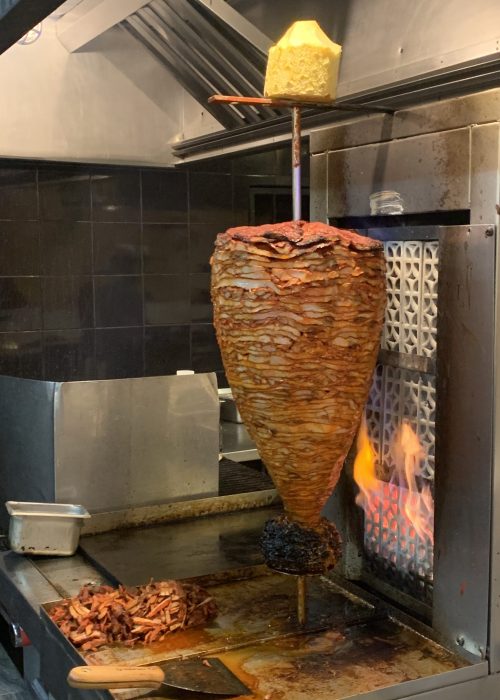
Making Do & Hard-shell Truths
This brings us to that taco kit. Contrary to what you might think, those as-seen-on-TV tacos so identified with brands like Old El Paso and Taco Bell are actually the result of developments made by Mexican Americans.
Tacos first appeared in print in the United States in the early 1900s, around the time when a large number of Mexican migrant workers began arriving in search of new opportunities. Their cuisine naturally followed and adapted when necessary. Next-generation Mexican cooks in the U.S. found themselves creatively adjusting their tacos to what the foodstuffs industry mainly had on offer at the time, and it certainly wasn’t avocados and intestines. Ground beef, cheddar cheese, tomatoes and iceberg lettuce were what was easily available, so that’s what they used.
They also invented those taco shells. Patents and cookbooks going back to the 1940s demonstrate that these game changers, designed to increase efficiency as they could be made ahead of time and kept far longer, were actually a Mexican American innovation. Patents for hard shells were awarded to Mexican applicants a decade before Glen Bell, founder of Taco Bell, apparently claimed to have invented them. Scandalous, but we’re not getting involved, this post is long enough as it is. For the scoop and then some, check out the above-mentioned Smithsonian interview, or just get yourself a copy of Jeffrey Pilcher’s book, it’s well worth it. Now back to Mexico.
Hasta Pronto, Taco Folks
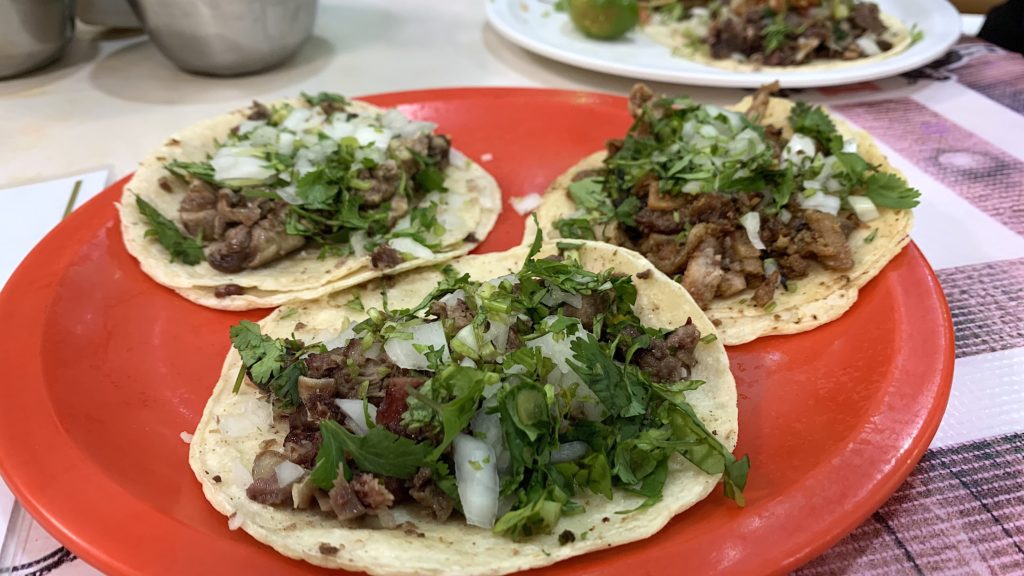
Although we’ve come a long way from those crunchy, hamburger-filled u-turns of yore, we’ve only just begun our taco trek at this point. Of course, we’ve hardly seen a thing, but what we did see back in La Paz definitely got us wanting more. Much more. With every trip to the taquería, our ignorance was made excitingly and deliciously clear in this town, served up with a warm smile, a little lime, and some hot sauce on the side. To give you a tiny taste, we again invite you to check out this post for a pelican’s fly-over of what really hit the spot. ¡Muchísimas gracias La Paz!
Indeed, the trail we’ve taken goes on and on, and there have been countless welcome surprises and some deliciously deep-track dishes along the way, from grilled beef intestine and brains tacos to a crunchy vampiro al cabeza – “head vampire” – but we’ll get to that some other time. The more we discover, the longer the menu seems to get, and we’re happily certain that we’re never to reach its end. That said, without a clue what else is in store and what else we’re bound to learn, we’re just gonna keep on keeping on as we head further and further into the tacoscape, enjoying all its delectable and surprising tacography as we go. There is, however, one thing we do know for sure:
We ain’t in Old El Paso anymore.

Thank you so much for reading, and please tune in for upcoming hungry helpings courtesy of La Paz, from some up-close coffee roasting with a local master to a fresh-caught sampling of the fisherman’s bounty spilling out of boats and kitchens all around this wonderful town. ¡Hasta pronto!
DISCLAIMER:
Backyard water slides like the Wet Banana and the Slip ‘N Slide have apparently slid themselves onto safety watchdog lists of the most dangerous toys around in recent years, along with the likes of lawn darts and Big Wheels. Pogo Ball bad too. As far as I remember, we came out pretty much unscathed by the whole lot in my family, but those were the crazy eighties, car doors still had ashtrays. Slide at your own risk.

